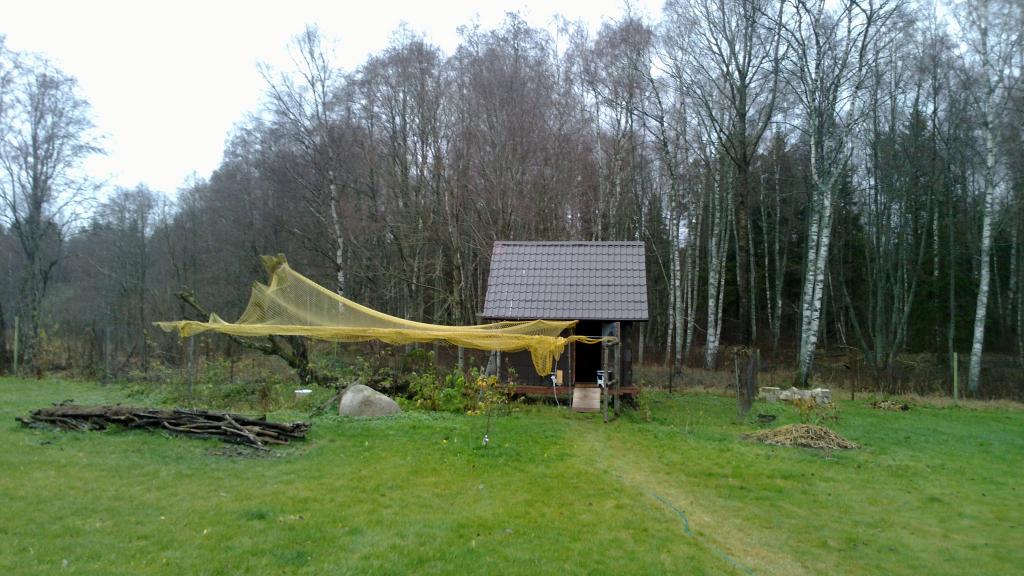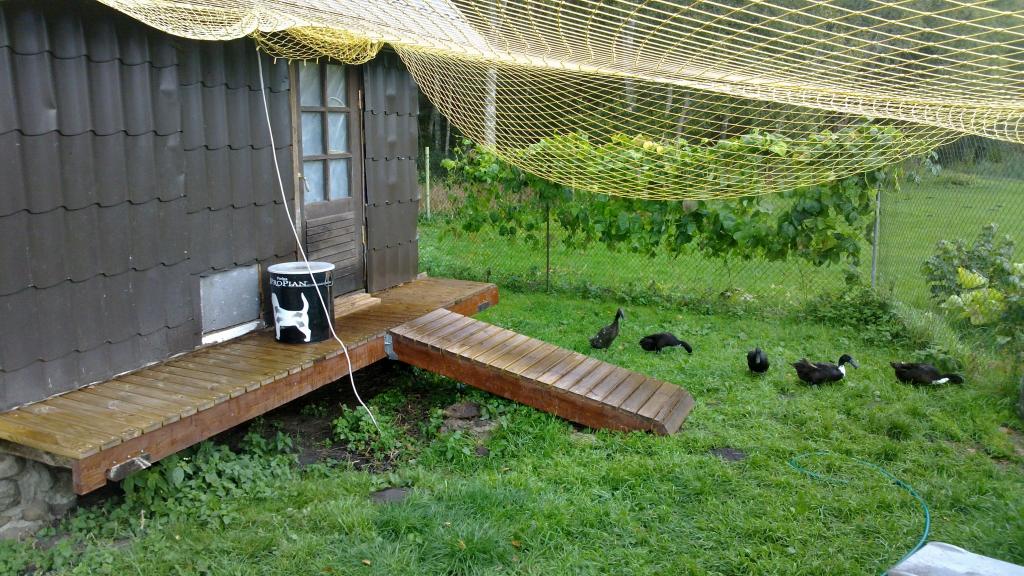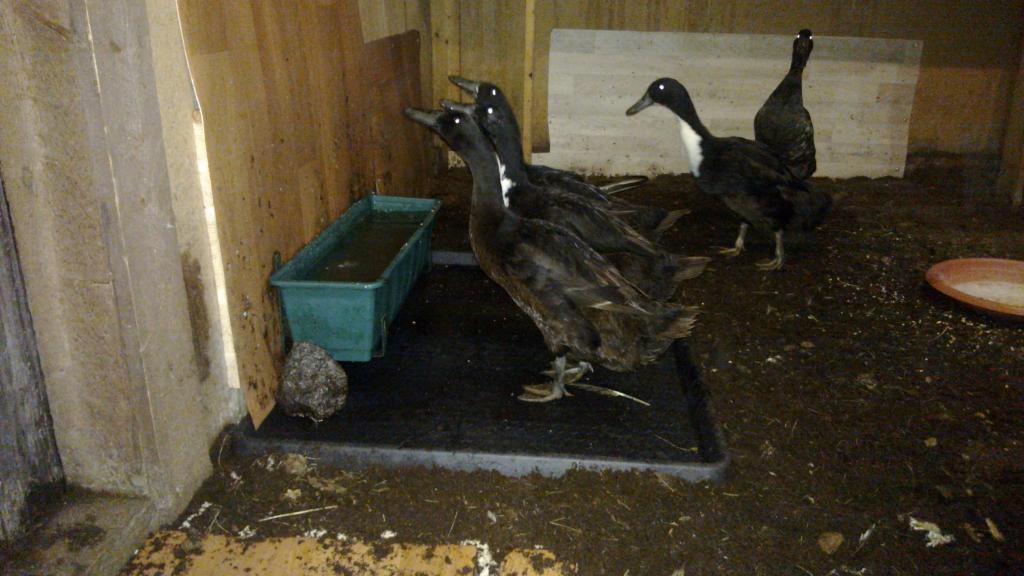This spring we bought 5 young Indian Runner ducks: 4 female ones and 1 male one. The ducks are called Termitomyces, Concepcion, Diversant and Part; the drake is called Tutulus. Today we had our 500th egg and we probably won’t get many more this year since the temperatures will soon be below freezing point and some have already stopped laying.
I wanted to write down a couple of things that we have learned about duck keeping during our first year. Maybe it will help someone.
First of all I live in Estonia which has a rather cold climate. For 3-5 months per year we have thick snow and the temperature is below freezing. Sometimes it’s around -20C for a week or even longer. While ducks are hardy and don’t seem to mind bitter cold they still need something that protects them from the wind, drinking water and some water to clean themselves in.
Luckily we didn’t have to start from zero since we already had an ex-henhouse on our property from the previous owners.
It stands on 4 drystone pillars about 1m above the ground, measures 4x4m and has the roof and walls covered with tin roofing panels and has mains power available.
So in short it’s a total overkill for this particular purpose. In the spirit of overkill I built a porch for it with a rather long ramp in place of the stairway since ducks can’t climb stairs as well as hens do. We also bought a large fishing net that protects some of the duck yard from goshawks and other flying predators since they were the reason why the old owner stopped keeping birds. Ducks also like to sleep under
the house during warm summer days which protects them nicely from overheating and flying predators.
The main problem with keeping ducks indoors for a large part of the year is that they are really messy birds and like to play with water. In the beginning we just had a ~15l water bowl in the middle of the room that they drank from and used for washing. We filled the bowl in the morning and in the evening and in between they always managed to find a way to spread most of it all over the room. This can’t possibly be good for the wooden floor of our duckhouse so we tried various ways to reduce the splatter.
What we are currently using is a balconly flower pot that is attached to the wall ~5cm from the ground and everything near it is covered with linoleum. Directly under the flower pot we have a large plastic multipurpose tray that has 4cm high edges. That way most of the splatter will stay on the tray that we can easily clean.



